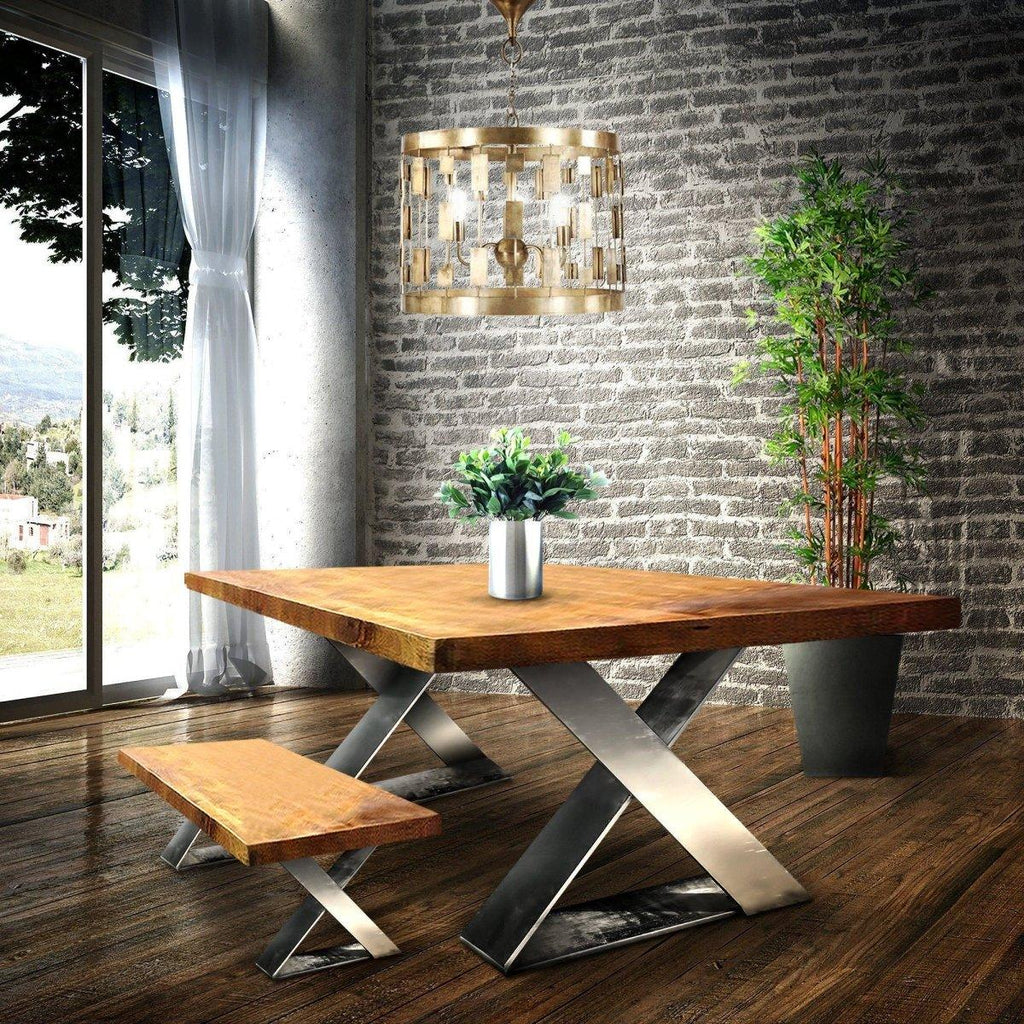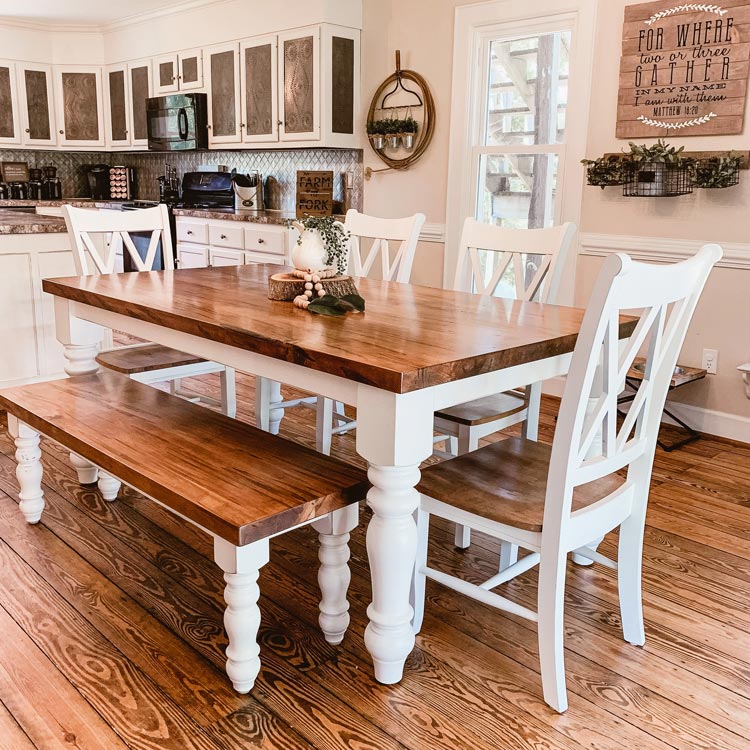Find the Ideal Dining Room Table Legs for Any Interior Design Style
Find the Ideal Dining Room Table Legs for Any Interior Design Style
Blog Article
From Conventional to Modern: Locate the Suitable Eating Space Table Legs for Your Style
The choice of eating space table legs plays a pivotal duty in specifying the general personality of your room, bridging the space in between standard craftsmanship and modern-day aesthetic appeals. While timeless styles such as cabriole and transformed legs stimulate a feeling of classic sophistication, contemporary designs like barrette and geometric choices present a chance for striking aesthetic rate of interest. Evaluating the right balance between these styles needs a nuanced understanding of your existing decoration and personal taste. As you consider these aspects, the question stays: how can you flawlessly integrate these diverse leg designs to produce a harmonious eating experience?
Understanding Table Leg Styles
The variety of dining-room table leg designs can substantially affect both the aesthetics and performance of the space. Each leg style contributes one-of-a-kind useful features and aesthetic elements, catering to diverse style preferences and usage demands. Comprehending these styles is important for picking the right table that aligns with your total interior decoration vision.
For example, conical legs supply a clean, traditional appearance that can enhance a room's beauty, while stand bases provide stability and make best use of legroom, making them optimal for smaller sized areas. Barrette legs, a hallmark of mid-century contemporary layout, present a commercial flair, permitting a ventilated, open feeling. Likewise, trestle legs evoke rustic beauty, supplying robust assistance and a sense of eternity.
Furthermore, the choice of products plays a substantial function. Wood legs can bring warmth and appearance, whereas metal choices usually communicate a streamlined, contemporary ambiance. Eventually, understanding table leg styles is important for creating a cohesive dining area that mirrors personal design while ensuring usefulness and comfort. By attentively considering these components, you can boost both the practical and aesthetic appeal of your eating room.
Standard Table Leg Options
When picking eating area table legs, traditional choices usually symbolize timeless beauty and craftsmanship. These styles mirror a rich heritage and a dedication to quality, making them optimal for those that value timeless aesthetics.
One of the most famous typical leg designs is the cabriole leg, defined by its stylish bent form. This layout usually includes attractive makings and is most generally located in Queen Anne and Chippendale furnishings. An additional popular option is the turned leg, which boasts a collection of smooth, rounded shapes that supply a timeless appearance while preserving stability.
Moreover, the straight leg, while easy, provides a durable and unadorned framework that can blend seamlessly with a variety of tabletop designs. For those attracted to ornate outlining, claw-and-ball feet legs stimulate a sense of splendour and can act as a stunning centerpiece in any type of dining space.
Last but not least, stand bases, although not purely legs, give a different standard choice that enables sufficient legroom and can be perfectly carved. Each of these traditional leg designs adds to the general ambiance of a dining-room, marrying feature with visual charm.

Modern Table Leg Styles
Modern table leg styles offer a varied variety of designs that emphasize clean lines and ingenious materials. These designs often focus on functionality while serving as striking focal factors within a dining room. Minimalist appearances prevail, with legs crafted from read what he said products such as steel, glass, and crafted wood, which add to a contemporary and ventilated feeling.
One popular layout is the hairpin leg, defined by its slender, conical framework that offers security without frustrating the tabletop (dining room table legs). This design is frequently found in mid-century contemporary furnishings and can effortlessly match various dining table forms. An additional trend is making use of geometric forms, where legs might take on angular or unbalanced forms, including aesthetic interest and a touch of creativity

Mixing Styles for Special Areas
Usually, homeowners look for to develop special dining spaces that show their personal style by mixing different style elements. This strategy enables the unification of diverse aesthetic appeals, leading to a harmonious yet distinct setting. Coupling a rustic wooden table with streamlined, contemporary metal legs can develop an appealing contrast that boosts the space's total charm.
Additionally, incorporating vintage table legs with contemporary tabletops can stimulate a sense of history while maintaining a contemporary perceptiveness. Such mixes not only display individual preference but additionally urge imagination, permitting property owners to curate a room that feels both individual and inviting.
Color plays an important function in this blending procedure; choosing table legs that enhance or comparison with the existing color pattern can boost aesthetic interest. For instance, whitewashed legs can soften the daring of a dark table surface, creating a well balanced aesthetic.
Tips for Choosing the Right Legs
Picking the right table legs is necessary for accomplishing both functionality and aesthetic allure in your dining space. Begin by taking into consideration the overall design of your area. Traditional settings profit from legs that include intricate carvings or transformed layouts, while contemporary spaces might require sleek, minimalist designs.
Following, analyze the elevation and stability of the legs. dining room table legs. Common eating tables range between 28 to 30 inches in height, so guarantee the legs match this dimension for convenience. Additionally, robust materials, such as hardwood or metal, can enhance stability and durability
Examine the leg form too-- alternatives consist of right, tapered, or stand designs. Straight legs provide a traditional look, while tapered legs can add a touch of sophistication. Pedestal bases give enough legroom and are ideal for smaller rooms.
Verdict
In summary, selecting the optimal dining-room table legs requires careful factor to consider of both modern and traditional designs. Standard choices such as cabriole and transformed legs offer timeless elegance, while modern-day styles like barrette and geometric shapes offer a contemporary touch. By harmonizing leg design, elevation, and material with the overall décor, a natural and welcoming environment can be achieved. Inevitably, the selected table legs ought to mirror the wanted aesthetic, enhancing the eating experience within the space. Recommended Site
The variety of dining space table leg styles can considerably influence both the aesthetics and functionality of the area. Inevitably, understanding table leg styles is important for producing a natural eating area that mirrors personal design while making sure functionality and convenience.One of the most renowned typical leg styles is the cabriole leg, defined by its graceful rounded form. Straight legs use a classic appearance, while tapered legs can add a touch of beauty.In recap, choosing the optimal dining space table legs calls for careful factor to consider of both conventional and modern designs.
Report this page